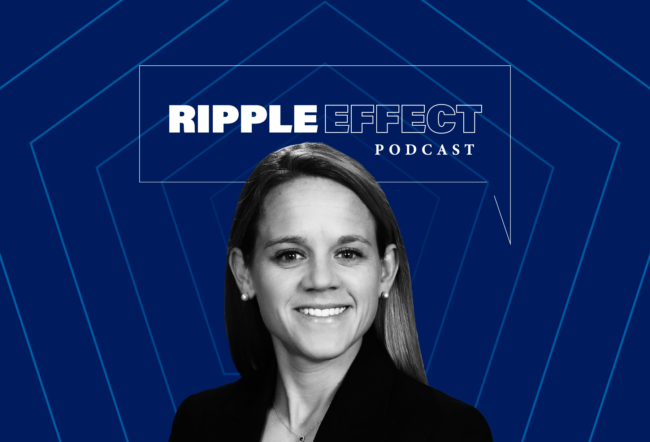If your hair stylist gave you $10 every time you sent one of your friends her way, you might be more tempted to tell all of your buddies what a fabulous stylist she was — or you might even try to make new friends to refer.
This clever method of customer acquisition is a form of word-of-mouth (WOM) marketing known as a referral program. While such programs have been used for decades by not-for-profit organizations like PBS, similar customer referral programs have also become increasingly popular with companies in a wide range of industries, from financial services and automobiles to newspapers and hotels. Christophe Van den Bulte, a professor of marketing at Wharton, describes customer referral programs as an effective way to attract higher quality customers. “They are an old idea that’s getting more traction these days,” he notes, “and we now have solid evidence of their financial benefits.”
According to a new study titled, “Referral Programs and Customer Value” (to be published in the January 2011 issue of the American Marketing Association’s Journal of Marketing), customer referral programs are indeed a financially attractive way for firms to acquire new customers. The study — authored by Van den Bulte, Bernd Skiera and Philipp Schmitt, a professor and doctoral student, respectively, at Goethe-University in Frankfurt, Germany — was conducted over a period of three years and followed the customer referral program of a leading German bank (which remained anonymous) that paid customers 25 euro for bringing in a new customer.
Van den Bulte says it is no coincidence that the study was conducted with colleagues based in Frankfurt, a city considered the eurozone’s financial capital, and the home not only of the European Central Bank, the Bundesbank and the Eurex, but also of the headquarters for several large banks, including Deutsche Bank, Commerzbank and KfW.
The objective of the study was two-fold, Van den Bulte states. “There’s a lot of talk about word-of-mouth-marketing, and about making money out of social connections. Our first objective was to see if customer referral programs can indeed turn social capital into economic capital. Second, we wanted to come up with a methodology to assess the effectiveness of customer referral programs that was easy to implement with data and tools available to many managers.”
Using information from a database of 10,000 customers acquired by the bank in 2006 — about half of them through the institution’s referral program and the other half through traditional marketing efforts such as direct mail and advertising — the study tackled three questions:
- Do referred customers have higher margins than other customers?
- Do referred customers stay longer with the firm than other customers?
- Do referred customers have a higher customer lifetime value (CLV), the net present value of all the profits a customer generates over his or her entire association with the firm?
The answers, according to the study, are all positive.
An analysis of customer activity from January 2006 until September 2008, a total of 33 months, showed that referred customers indeed generated higher margins than other customers. This difference was quite sizable at first, but eroded over time and came down to zero after about 1,000 days.
This pattern, Van den Bulte notes, is consistent with what is known as the “better-matching mechanism”, which has been documented in studies by economic sociologists at MIT on employee referral programs. The practice involves employees getting paid for bringing in new hires and is especially popular in high-tech industries.
“As a customer, I know my bank better than non-customers do. I also know my friends better than my bank does,” Van den Bulte points out. “I have a better idea than my bank about which of my friends would be a good match for the bank, and vice versa. This is the better-matching argument: The existing customer knows both the bank and the prospect, and so has superior information to assess to what extent there is a good fit between the two. Using that information, I only refer prospects who I feel will match well with my bank.”
This “superior match” phenomenon explains why the margins documented at the beginning of the study were higher for the referred customer than for the customer acquired through traditional marketing efforts. Well-matched customers simply generate more revenue at a lower cost to the firm.
As the bank worked with the new customers, however, the two parties learned about each other from their own interactions and no longer needed to rely on having a third party in common (the customer who made the referral). The initial information advantage from superior matching eroded as the relationships between the bank and new customers developed, and so did the margin advantage. Thus, the better-matching effect also explains why the difference in margin eroded over time.
Sharing a Bond
The second key finding was about customer retention. Referred customers were about 18% more likely to stay with the bank than other customers, and that gap did not fade over time. This pattern, Van den Bulte suggests, is consistent with another mechanism documented in previous studies on employee referral programs. People tend to have a stronger attachment to an organization if their friends or acquaintances share a bond to the same establishment.
The researchers also concluded that the difference in margin combined with the difference in customer retention amounted to a disparity in long-term customer value of 16% to 25%. “That’s not only a sizable chunk of money,” Van den Bulte says, “it also amounts to a 60% ROI over six years on the 25 euro that the bank paid for every referral.”
Many practitioners, including managers of the bank who made the data available, fear that referral programs suffer from “moral hazard,” where opportunistic customers bring in “deadbeats and other unprofitable new customers just to earn a referral fee,” Van den Bulte states. However, the study shows that the benefits of a customer referral program can outweigh such negatives, making the programs pay off financially.
According to Van den Bulte, this is the first study ever published on the financial evaluation of customer referral programs. “We actually have hard financial numbers, not vague feel-good stories or abstract statistical coefficients. Our findings and methodology are something that financial managers can actually understand and apply immediately,” he says.
It helps that the techniques used to conduct the study were simple and straightforward, he adds. “You can basically [calculate the value using] Excel. You don’t need a master’s degree in statistics; a smart intern or decent marketing consultant can do it. We hope our study will actually motivate and help companies to assess how effective their referral programs are.” The margin, customer retention and customer value numbers, he notes, will vary across industries and customer segments, but the procedures used in the study can be put into practice at any company with customer profitability data.
Van den Bulte says that referral programs featuring a financial pay-out are likely to remain a B2C practice, “because paying referral fees to B2B customers’ employees could be conceived as a bribe. Pharmaceutical and medical companies sometimes get in hot water with the FDA for remunerating opinion leaders to educate fellow physicians about the benefits of new products, so I expect that paying someone money just to bring in a new B2B customer or lead will be frowned upon. Of course, the absence of financial pay-outs does not mean that customer referrals are any less important in B2B markets. Companies just have to be more creative in finding proper incentives enabling them to capitalize on their existing customers’ networks.”
Why does a study on the financial benefits of customer referral programs make sense now? The recent trend toward viral, or social, marketing is one reason, but Van den Bulte notes that there is also a general belief that the ROI on traditional marketing has been decreasing. Consequently, companies feel that something must be done to “get a bigger bang for our marketing dollars.” This in turn has put marketers under pressure to quantify the return on their expenditures. “Marketing accountability is a major trend nowadays. One of the appeals of using a customer referral program is that you know exactly how much you put into it and, as our study shows, you can also calculate how much you’re getting out of it.”
Although the study compared the financial value of customers acquired through referral programs versus traditional channels, Van den Bulte and his colleagues now plan to compare the behavior of pairs of referring and referred customers, asking such questions as, “If one stops being a customer of the bank, does the other have a higher chance of leaving as well?” and “Do high-value referrers tend to bring in high-value referrals?” The answers, Van den Bulte says, are important to identify the best customers toward which referral programs should be targeted. The team has already begun analyzing the data and hopes to have new insights ready within a year.



